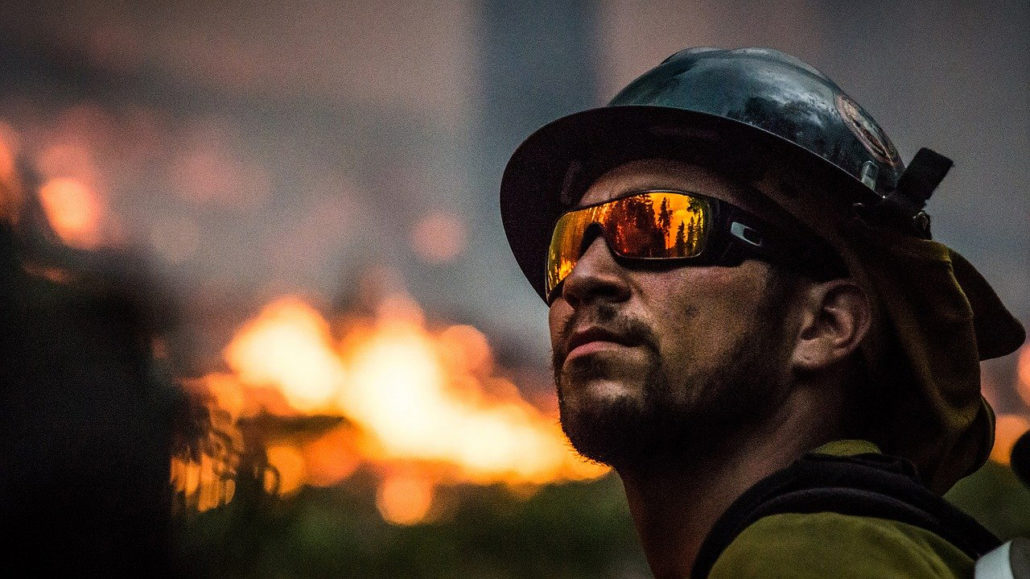Wildfire Season! Don’t Leave Your Home and Property Unprotected!
Wildfire season is underway in our region – with a vengeance! Don’t leave your home and property vulnerable.
Despite British Columbia wildfire season getting a bit of a late start this summer, the dry, hot conditions set it up to be as dangerous and challenging as years past. With communities, properties, and untold hectares of wilderness under threat, it may seem that there isn’t much you can do to protect yourself against the power of a wildfire.
We’ve seen the ravages of previous wildfires to communities like Fort McMurray a few years ago, and in BC, smashing records in the summers of 2017 and 2018. This year, we watch as flames engulf mountainsides above the lights of the city, gape as helicopters and planes loaded with water fly overhead hour after hour, and keep an eye on the British Columbia interactive wildfire map, for regular updates.
You may think there is little you can do to protect your home and property against such a force of nature, you’re not entirely powerless. First, let’s make clear, we always urge you to listen to the recommendations of your local authorities and follow their instructions to protect yourself and your family in the event of imminent threat of forest fire.
But, there are several ways you can protect your home and property against wildfires if you’re proactive.
Is yours a region under threat of forest and wildfires?
Identify, first, if you live in a region that is often subject to the threat of frequent wildfires. Sad fact: many British Columbia communities are!
A whopping 30 per cent of the world’s total forests and 10 per cent of what is known as forest cover are here in Canada. With so much of our landmass covered in forests, we are vulnerable to a higher incidence of wildfire, depending on the environmental conditions.
But, wildfires aren’t all bad. Rather, they are essential to forest renewal and the overall health of our valuable forests. Fire helps to release seeds and vital nutrients. It also clears the overhanging forest canopy to allow more sunlight to stimulate fresh growth.
However, issues of climate change – higher temperatures and less precipitation – and increased development, mean that we can experience forest fires with greater frequency and intensity. And the increased risk to communities, homes, and property.
Statistics gathered by Natural Resources Canada (NRC), identify that 2.5 million hectares per year have been destroyed by Canadian wildfires over the past 3 decades – a tremendous cost to land and property. That’s also significant resources devoted to fire suppression efforts. As much as $500 million to $1 billion a year.
When you live in an area at risk, as we do, it’s important to take as many preventative measures as possible when it comes to protecting your property.
Building materials as fire prevention
In a region of high risk, one of the best methods of loss prevention and mitigation in the event of a fire is to choose the building materials of your home or business thoughtfully, with protection in mind.
According to the experts at the Institute of Catastrophic Loss Reduction (ICLR), and their report on wildfire events and the prevention of loss, “Firewise homes have a survivable landscape and use appropriate building materials. Investments of a few hundred dollars can significantly reduce the risk [of] wildfire damage.”
Fortunately, organizations and insurance companies work together to provide resources to builders and homeowners to build more effective fire-resistant homes. The ICLR supports the adoption of Wildland Urban Interface provisions in national building codes, for example, working with FireSmart Canada and the National Fire Protection Association (NFPA).
FireSmart Canada advises that hot, burning debris can be tossed as far as two kilometres ahead of a wildfire, making it a threat to anything in the fire’s even distant path. Its radiant heat alone is able to break windows and melt vinyl siding. Anything in the fire’s path, of course, will ignite and be destroyed in direct flames.
If you’re able, leave what is referred to as a “non-combustible zone” of up to 1.5 metres around your home. Essentially, keep your home clear of any materials that could easily ignite. FireSmart suggests reducing if not removing entirely, shrubbery – like highly flammable junipers – and evergreens to within as much as 10 metres of any structures. Keep any trees within 10 to 30 meters of your home and other structures, pruned and thinned. Also, make a point of keeping nearby powerlines clear of branches and tree limbs.
If you’re building new or starting a renovation, consult with your builder about the most appropriate building materials to help mitigate or prevent damage from fire. When considering your exterior finishes, for instance, opt for fibre-cement siding instead of wood shakes or vinyl siding. When you choose a roofing material, metal sheeting or asphalt shingles will offer much greater protection than a wood shakes.
Fortunately, with innovations in building materials, you don’t have to compromise style and aesthetics in favour of safety. It’s easy to find high-quality building materials in a variety of beautiful finishes. Take a look at materials such as concrete and steel and marvel at the possibilities – a realistic and attractive wood grain appearance, as only one example.
Your handy guide for a more fire-resistant home or business
There is a variety of measure you can take to make your home more resistant to wildfires:
- Siding: As mentioned, wood and vinyl aren’t great choices when it comes to protecting your property from fire. Instead, look to fire-resistant materials such as stucco, brick, metal, concrete, or fibre-cement siding. Logs and timbers are also effective.
- Roof: Again, look to metal and asphalt. Composite rubber and clay tiles offer better fire-resistance, too. Wood shakes, no matter how attractive, are highly combustible and also leave dangerous cracks – a potential point of entry for burning embers and debris.
- Chimney: Your fireplace or woodstove can be a source of fire – actually tossing sparks and embers out on to your roof or into the surrounding brush and other material. Add a spark arrestor to your chimney.
- Windows: Install tempered, dual- or multi-paned windows to replace any single-pane you might have in your home. The heat alone from a wildfire can break single-panes. Install metal screens to help reduce any radiant exposure as you help to protect against the entry of any burning debris or embers.
- Doors: Be sure that all of your doors, for your home, garage, and any outbuildings have proper seals and are fire-rated.
- Balconies and decks: Replace wood decking with attractive, non-combustible decking boards or consider a concrete patio.
- Gutters and eaves: Keep your gutters clear buildup and potentially dangerous clutter from branches, leaves, moss, and other debris. This kind of buildup is easily ignited by embers or sparks.
- Vents: Don’t underestimate the possible dangers of even small openings. Vents can offer a way in for burning embers and sparks. Be sure to install fire-rated vents. Screen them over for added protection.
- Fences, walkways & boardwalks: While lovely, a wooden fence can actually lead flames directly to your home and front door. An easy fix? Add a metal gate to provide adequate separation between your wood fence and your house.
- Sheds and outbuildings: If you have any structures (garages, workshops, guesthouse, even an outhouse) within 10 metres of your home, follow the above list.
- Lawn: Keep your surrounding lawn and landscaping trimmed, mowed, and watered.
Given where we live, it’s very likely that your existing home insurance policy (condo, tenant, farm, commercial, and auto) provides coverage for damage and destruction caused by wildfire.
However, if you have any questions about the types of fire damage covered by your insurance – some specific kinds of damage can be excluded or have limits – TALK TO US!



